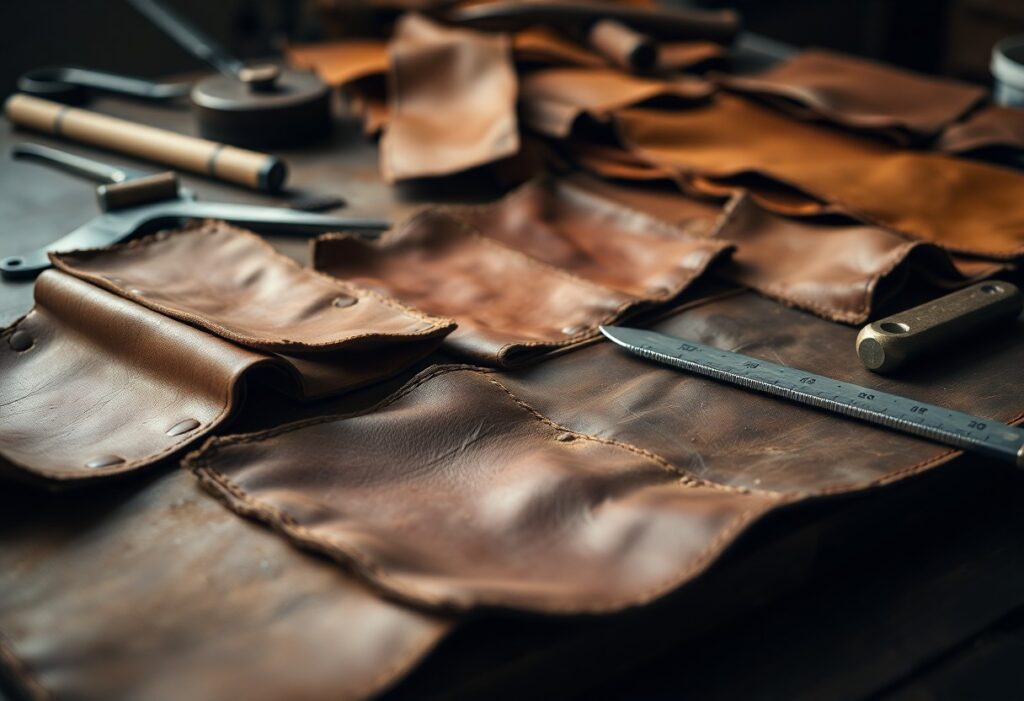
The craft of leather tanning has evolved significantly over the years, transforming from a basic necessity into a sophisticated art form that plays a crucial role in determining the quality of your leather goods. Various tanning methods produce distinct leather attributes, influencing factors such as durability, water resistance, texture, and color retention. The tanning journey starts with raw hides and undergoes essential stages, including methods like chrome tanning, vegetable tanning, and chrome-free techniques. Each approach imparts unique qualities to the leather, directly affecting its usability and maintenance. A deep understanding of these processes empowers you to make educated choices regarding leather quality while also considering the environmental repercussions, as some techniques are notably more sustainable than others.
Uncover the Varied Techniques for High-Quality Leather Tanning
Creating premium leather necessitates the use of multiple tanning methods that convert raw hides into practical leather goods. The primary techniques include chrome tanning, vegetable tanning, and chrome-free tanning. This comprehensive guide is designed to deepen your understanding of each method's intricacies, allowing you to choose the tanning process that best fits your leather needs and preferences.
| Method | Characteristics |
| Chrome Tanning | Rapid processing, enhanced water resistance, accounts for 85% of global production |
| Vegetable Tanning | Natural and eco-friendly, comprises 10% of leather production |
| Chrome-free Tanning | Environmentally safe, represents 5% of production |
| Combination Tanning | Integrates multiple methods for unique leather properties |
| Aldehyde Tanning | Specialized for specific applications, ensuring targeted quality |
Deepen Your Knowledge of the Chrome Tanning Method
The chrome tanning technique employs chromium (III) salts to produce leather that is soft, pliable, and highly valued across numerous industries. This method yields leather that not only boasts water-resistant qualities but also readily absorbs dyes, making it a preferred option among manufacturers. The speed of chrome tanning is remarkable, often taking just 24-48 hours to complete, which is essential for fulfilling the demands of mass production while maintaining high standards of quality.
Experience the Rich Heritage of Vegetable Tanning
Regarded as one of the oldest and most traditional methods, vegetable tanning utilizes natural tannins sourced from tree bark and leaves. This technique is celebrated for producing leather that ages gracefully, acquiring a rich patina over time while remaining biodegradable. Different forms of vegetable tanning, such as those derived from oak bark, chestnut, and mimosa, contribute distinct characteristics to the final leather product. This method is labor-intensive, typically requiring around 4-6 weeks, resulting in leather that is generally firmer and more structured than chrome-tanned options, appealing to those who appreciate craftsmanship.
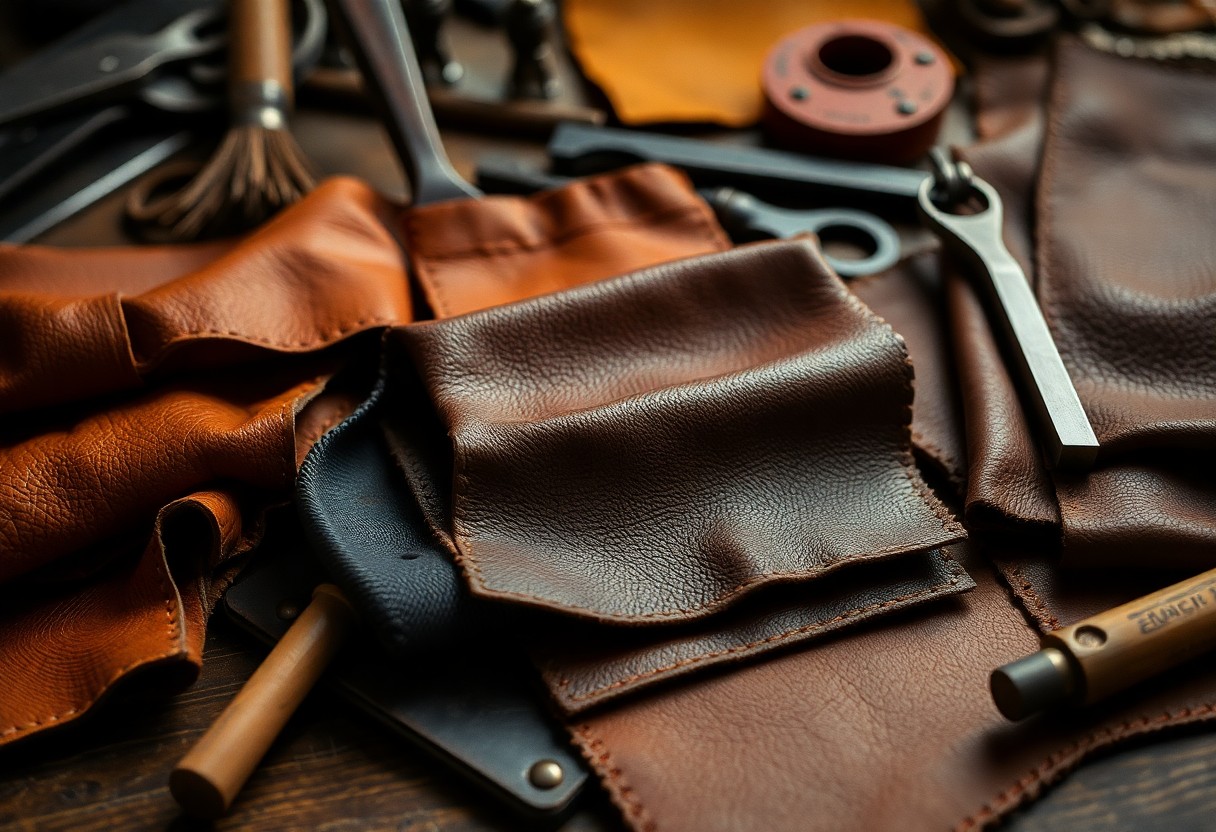
Comprehensive Breakdown of the Leather Tanning Process
The transformation of raw hides into high-quality finished leather is a systematic and structured process. Here’s an in-depth look at each essential step and its role in achieving the best leather quality possible.
Essential Pre-tanning Steps for Achieving Superior Leather Quality
To ensure the highest quality of leather, the raw hides must undergo a series of meticulous preparation steps. This initial stage begins with soaking the hides in clean water for 24-48 hours, allowing salt and dirt to be effectively removed. Following this, a liming process is employed to thoroughly eliminate hair and fats. Maintaining precise pH control during this stage is critical to preventing any harm to the hides and ensuring a successful tanning outcome.
Key Procedures in the Primary Tanning Phase
The pretanning phase kicks off with deliming and pickling, preparing the hides for exposure to the primary tanning agents. Chrome tanning is the most prevalent method, utilizing chromium sulfate and achieving results in as little as 24 hours. On the other hand, vegetable tanning relies on natural tannins, extending the process to approximately 20-60 days, emphasizing the importance of time and care in producing high-quality leather.
Temperature regulation plays a vital role during the tanning process. Typically, chrome tanning operations occur at temperatures ranging from 35-40°C, while vegetable tanning is conducted at cooler temperatures of 20-25°C. Continuous monitoring of pH levels is essential to prevent damage to the leather and ensure optimal absorption of tanning agents, which is crucial for achieving the desired end quality.
Advanced Leather Treatment Techniques for Quality Enhancement
A variety of innovative techniques are available to enhance the properties of your leather. From surface finishing techniques to deep penetration treatments, each method serves a specific purpose in improving the leather's overall functionality. With the right treatment, you can extend the lifespan of your leather by up to 50% while significantly boosting its resistance to water, heat, and wear, thereby ensuring its integrity for many years.
Exploring Different Surface Treatment Options for Leather
Surface treatments applied to leather can include techniques such as waxing, buffing, and protective coatings. These methods can enhance water resistance by up to 70%, providing options for both shiny and matte finishes to cater to your aesthetic preferences. Additionally, surface treatments are essential in safeguarding leather against UV damage and the daily wear and tear it faces, ensuring that your leather products remain in excellent condition throughout their use.
Understanding Dyeing Techniques to Boost Color and Longevity
Your leather can absorb various types of dyes at different depths, depending on the dyeing method chosen. For example, aniline dyeing penetrates deeply into the leather, while surface dyeing allows for a more controlled application of color. The dyeing process selected will directly affect the leather's appearance and its long-term durability, influencing how well it ages over time.
Furthermore, the dyeing technique you opt for significantly impacts the final characteristics of the leather. Drum dyeing can achieve an impressive 95% color penetration, while spray dyeing offers enhanced precision for color control. It's important to note that while natural dyes are more eco-friendly, they may fade approximately 20% faster than synthetic alternatives, making the choice of dye types an essential consideration for environmentally conscious consumers.
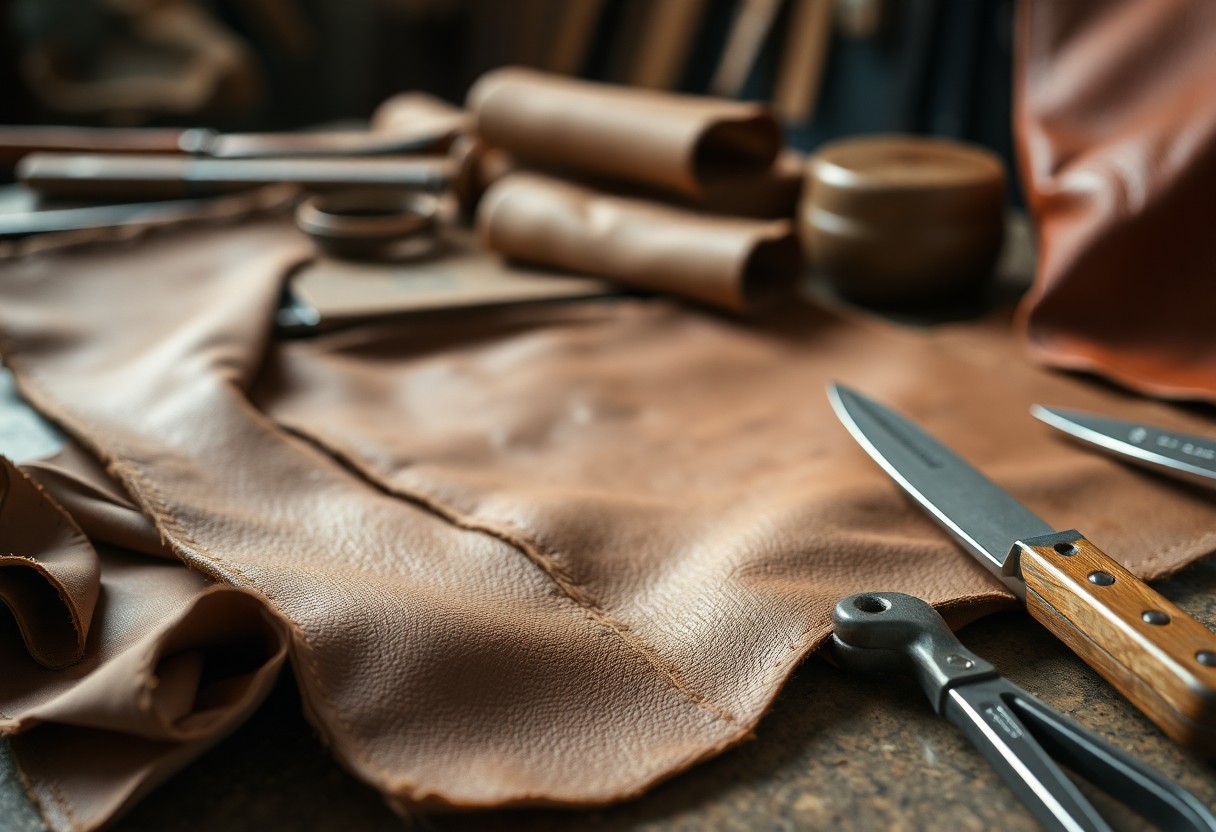
Essential Quality Determinants in Leather Processing
The quality of leather is influenced by numerous interconnected factors throughout the processing cycle. A thorough understanding of these elements is vital for achieving optimal results in both leather selection and maintenance. The tanning method employed, the inherent quality of the hides, and the specific processing parameters all play critical roles in determining the final attributes of the leather. By mastering these factors, you will be better equipped to evaluate leather quality according to your individual needs and preferences.
Selecting Raw Materials for Optimal Leather Quality
When choosing raw materials, it's essential to focus on the condition of the hides and the animal source. The quality of your raw materials has a direct impact on the properties of the finished leather product. Ideally, the best hides originate from healthy animals and exhibit minimal surface defects. Look for consistent thickness and an absence of parasitic damage. Selecting materials based on their intended use is crucial, as different applications require specific hide characteristics to ensure optimal performance and longevity.
The Importance of Processing Parameters for Quality Assurance
There is a clear link between processing controls and the overall quality of leather. Maintaining strict oversight of pH levels, temperature, and chemical concentrations is vital for achieving high-quality results. The typical tanning duration spans from 24 to 48 hours, with temperature controls kept between 35-40°C. Diligent attention to these parameters is essential to ensure consistent leather quality throughout the entire processing phase.
This meticulous oversight must extend to every stage of processing. Monitoring moisture content (ideally maintained at 45-55%), ensuring appropriate drum speed during tanning, and maintaining accurate chemical dosing are all critical components. Additionally, managing drying conditions is essential to prevent any damage to the leather. A comprehensive focus on these parameters ultimately culminates in the production of superior-quality finished leather.
Proven Strategies for Achieving Optimal Leather Treatment Results
Not all leather treatment processes yield equivalent levels of quality. It is critical to prioritize temperature control, chemical balance, and timing precision throughout the tanning process to achieve the best possible outcomes.
- Regularly monitor pH levels to ensure consistency
- Maintain a stable temperature to support quality
- Adhere to precise chemical ratios for optimal results
- Meticulously document each step of the tanning process
Being vigilant about the signs of proper tanning can enable you to achieve high-quality finished leather that meets and exceeds your expectations.
Techniques for Process Optimization in Leather Tanning
To achieve exceptional results, it is crucial to control your tanning environment. Maintain your workspace at temperatures of 20-25°C, while ensuring humidity levels stay between 45-55% to create ideal conditions. Ensure that your chemical solutions are fresh and accurately measured. Regular maintenance of equipment is essential for achieving reliable results throughout the tanning process.
Ensuring Quality Standards Through Proper Leather Maintenance
The quality of leather largely depends on your storage conditions and handling practices. Store your leather in a cool, dry area away from direct sunlight to maintain its integrity and prevent degradation. Regularly check the moisture content and rotate your stock every 30 days to ensure optimal conditions are upheld.
Monitoring the tanning process is critical for maintaining quality standards. Your routine checks should encompass pH testing, physical inspections, and moisture content analysis. Documenting all findings and making adjustments to your procedures based on results will enable you to identify potential issues before they negatively impact your final product, thus ensuring high standards are upheld throughout the leather processing journey.
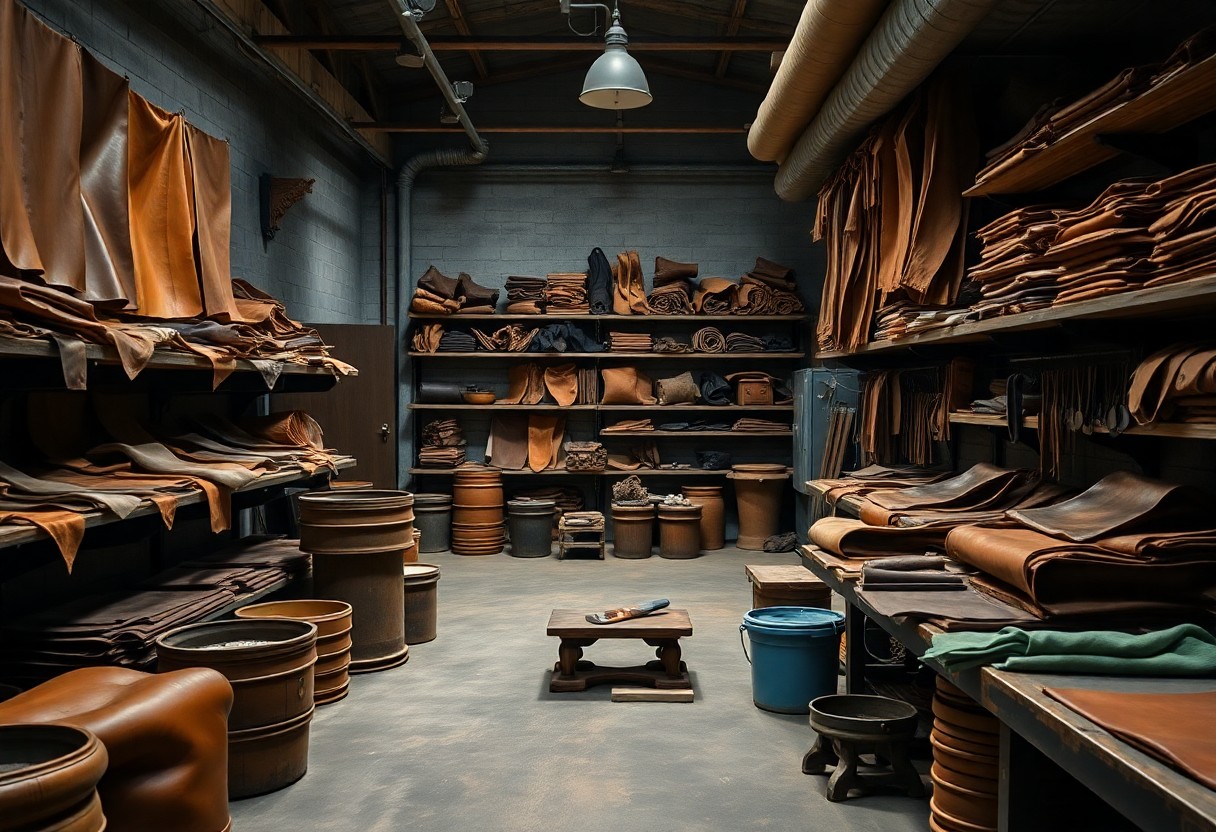
In-depth Comparison of Various Leather Tanning Techniques
To thoroughly understand leather tanning, it is essential to assess the different methods based on their respective advantages and disadvantages. Below is a detailed comparison of the primary tanning techniques:
| Pros | Cons |
|---|---|
| Chrome tanning: Rapid processing, cost-effective | Chrome tanning: Environmental concerns, potential disposal challenges |
| Vegetable tanning: Eco-friendly, natural process with sustainable practices | Vegetable tanning: Lengthy process, requires more water |
| Chrome-free tanning: Safe for the environment, delivers good quality | Chrome-free tanning: Complex procedures, may incur higher costs |
| Combination tanning: Offers versatile properties | Combination tanning: Challenges in maintaining quality control |
Financial Implications of Leather Tanning Choices
The choices you make regarding leather tanning methods can significantly influence production costs. Chrome tanning demonstrates 85% cost efficiency compared to vegetable tanning, whereas chrome-free methods generally increase expenses by 20-30%. Understanding these economic factors is vital for effective budgeting and strategic planning in the leather production sector.
The Impact of Tanning Choices on Leather Quality
The quality of even the finest leather can be greatly diminished by poor tanning choices. The tanning method you select directly influences key attributes such as durability, water resistance, and texture, which are essential for the overall performance of the leather.
For example, leather processed through chrome tanning exhibits exceptional water resistance and flexibility, making it ideal for a wide range of applications, while leather tanned using vegetable methods often showcases superior aging characteristics and develops a unique patina over time, enhancing its aesthetic appeal and value.
Essential Insights on Leather Tanning and Treatment Techniques
The information provided highlights that various leather tanning and treatment methods profoundly affect the quality and characteristics of your leather. The decision between chrome, chrome-free, or vegetable tanning will greatly influence your leather’s durability, texture, and environmental footprint. Additionally, the dyeing technique you select—whether it’s aniline or crust—will have implications for your leather’s color depth and aging process. Finally, the type of finishing applied—be it full grain, corrected grain, or top-coated—determines the standards for appearance, breathability, and maintenance needs. A comprehensive understanding of these processes empowers you to make informed decisions regarding your leather purchases and care practices, ultimately ensuring satisfaction and longevity.
Your Leather Tanning Questions Answered: FAQs
Q: What are the main differences between chrome tanning and vegetable tanning?
A: Chrome tanning employs chromium salts, resulting in soft, water-resistant leather that is processed quickly and cost-effectively. This method accounts for 85% of global leather production. Conversely, vegetable tanning uses natural tannins sourced from tree bark and leaves, requiring a longer processing time while producing leather that develops character with age. Although vegetable-tanned leather is more environmentally friendly regarding disposal, it is more susceptible to staining compared to chrome-tanned alternatives.
Q: How does aniline dyeing influence the quality and appearance of leather?
A: Aniline dyeing involves immersing leather in dye baths that penetrate deeply into the material. This technique produces consistent color throughout the leather, ensuring excellent color retention. Modern aniline-dyed leather is often dyed partially rather than completely, preserving a lighter middle layer. This approach enhances the leather's stability while providing good color depth on the surface, resulting in a more visually appealing final product.
Q: What differentiates full grain leather from corrected grain leather?
A: Full grain leather retains its natural surface without sanding or artificial overlays, showcasing natural pores, the strongest fiber structure, and the ability to be restored when scuffed. In contrast, corrected grain leather is sanded and coated with a plastic layer. While corrected grain is easier to clean and maintain, it typically lacks breathability and may crack over time without repair options, making full grain leather a more appealing choice for discerning consumers focused on quality.
The Article Guide to leather tanning and treatment methods processes types and their impact on quality appeared first on My Shoes Finder
The Article Leather Tanning: Methods, Processes, and Quality Impact Guide Was Found On https://limitsofstrategy.com
The Article Leather Tanning Methods: Processes and Quality Impact Explained First Appeared ON
: https://ad4sc.com
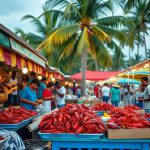

It’s fascinating to see how the craft of leather tanning has not only evolved but also how it mirrors broader trends in sustainable practices and artisanal craftsmanship. I’ve recently become more aware of how the tanning process can influence everything from the tactile experience of a leather bag to its environmental footprint. For example, veggie-tanned leather often develops a beautiful patina over time, showcasing the character of the material and the care given to it.
You’ve hit on such an important aspect of leather tanning that often gets overlooked. It’s interesting how the process itself shapes not just the quality of the leather, but also the experience we have with it over time. Veggie-tanned leather really stands out in how it ages; that developing patina doesn’t just enhance its beauty, but it tells a story. Each mark and change reflects not just the environment it’s been in, but the life it’s had with its owner.
You bring up some great points about leather tanning and its relationship with sustainability and craftsmanship. The transition to vegetable tanning is a fantastic example of how a traditional technique can align with modern values. It’s intriguing how the aging process reveals a leather piece’s story—each scratch and mark adds a layer of character that mass-produced alternatives often lack.
I’m glad you found the evolution of leather tanning so intriguing! If you’re interested in exploring more about the unique qualities of veggie-tanned leather and how it supports sustainable practices, check out our curated selection of artisanal leather goods.
https://oldicom.net/quillbot
You really hit the nail on the head with the connection between leather tanning and sustainability. The shift to vegetable tanning reflects a broader trend where artisanal techniques are regaining appreciation in our fast-paced world. It’s fascinating how something as simple as leather can carry so much history and personality.